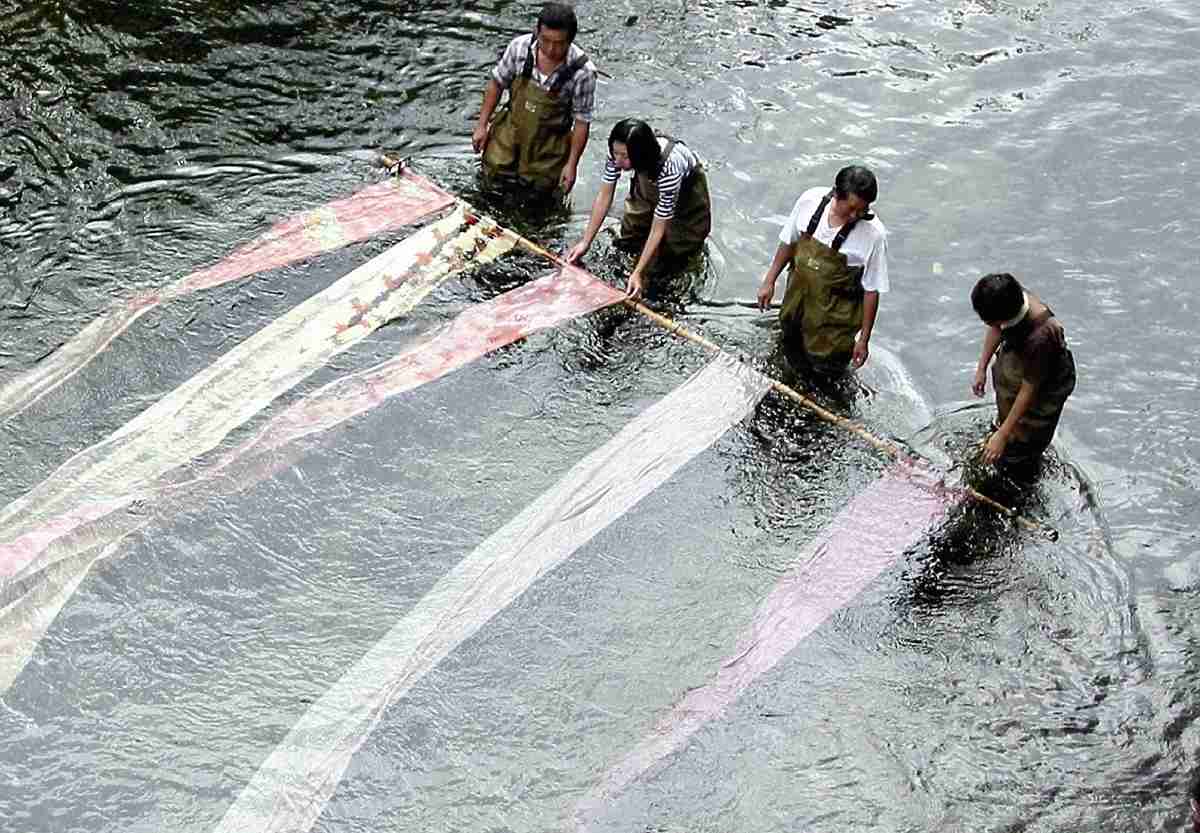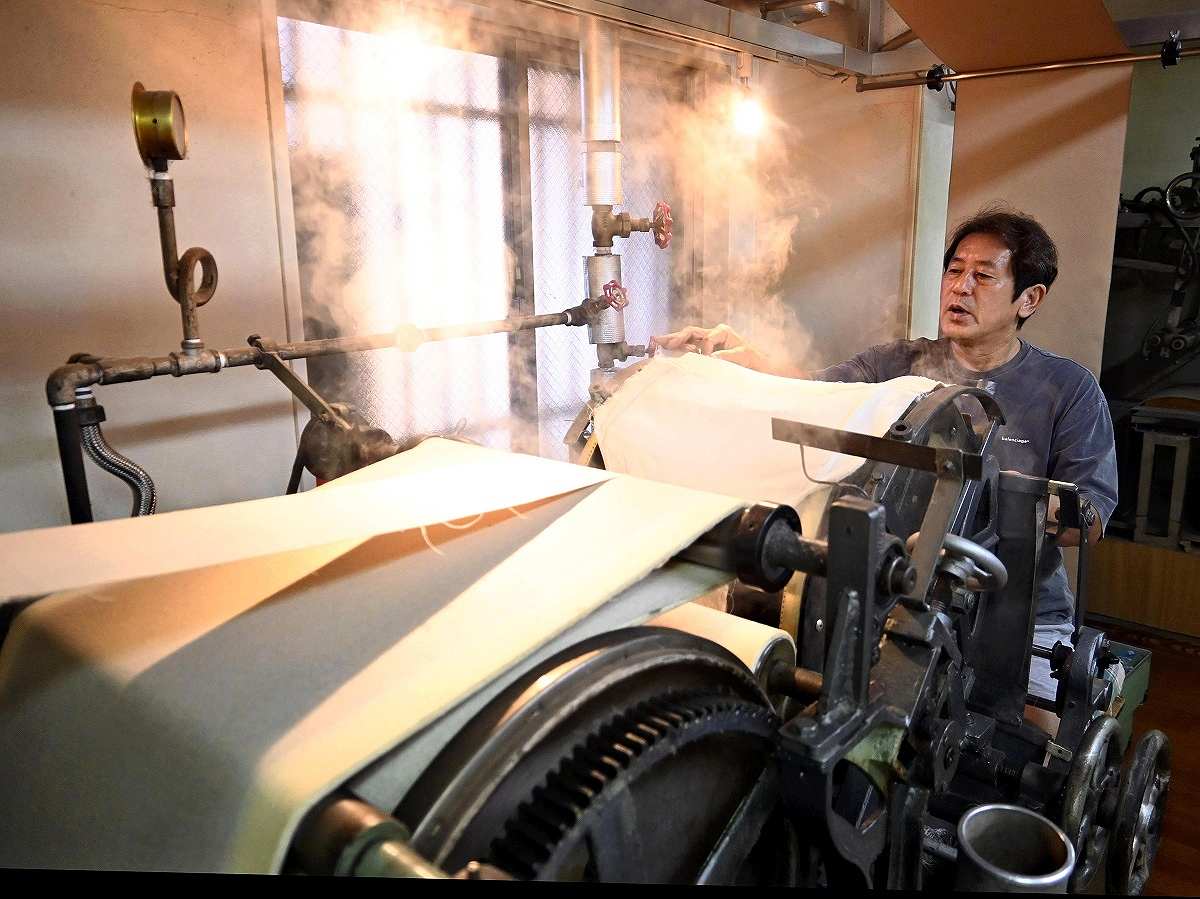
JAPAN (ANN/THE YOMIURI SHIMBUN) – Nestled amid the glittering skyline and vibrant lights of Tokyo’s Shinjuku Ward, particularly renowned for the bustling Kabukicho district, is a hidden gem – a traditional kimono-dyeing industry steeped in history.
Shinjuku is not only a backdrop of towering skyscrapers but also the birthplace of time-honoured kimono fabric production, employing traditional techniques like Edo-komon and Edo-yuzen. Delving into the area’s past unveils the roots of this artistic tradition, dating back to the Edo period (1603-1867).
In the heart of western Shinjuku’s Kamiochiai district, within an unassuming apartment building, an antiquated machine billows white steam, diligently smoothing out wrinkles on dyed fabric with a rhythmic roll.
This meticulous process, known as “yunoshi,” echoes the essence of Shinjuku’s enduring commitment to preserving the rich legacy of traditional kimono craftsmanship.
“The connection between Shinjuku and dyeing is hidden in the name of Ochiai,” said Satoshi Yoshizawa, 59, a third-generation yunoshi craftsperson and chairperson of the Shinjuku City Dyeing Council.
According to Yoshizawa, the district was named Ochiai because the Myoshoji and Kanda rivers that run through the ward “come together” (ochiau in Japanese) there.
The dyeing process requires a large amount of water to rinse off the dye and glue, so dyeing businesses set up their premises along the rivers to get access to a good supply of water.

During the Edo period, the area stretching between the Kanda and Sumida rivers, which flow through the Kanda and Asakusa districts, was the centre of the dyeing industry. The present-day town name of Kandakonya in Chiyoda Ward suggests the area around Kanda was home to many konya, or dyeing shops, during the Edo period.
The most cutting-edge fashion district during the Edo period was the present-day Nihonbashi area of Tokyo, where kimono stores such as Echigoya ran their outlets. It is said that kimono stores ordered fabrics with trendy patterns from konya in Kanda and Asakusa.
As time passed from the Meiji era (1868-1912) to the Taisho era (1912-1926), the dyeing industry in the Kanda area began to decline.
While Kanda and Asakusa became busy districts, the water quality of the Kanda River deteriorated. It also became difficult for workshops to secure enough land. Dyers that were searching for clean water and large areas of land ended up in Shinjuku, located upstream.
The dyeing industry in Shinjuku boomed from the post-war period until the early 1960s. Modern and stylish Edo-yuzen kimono were more popular than those that were made using Kyoto’s Kyo-yuzen and Ishikawa Prefecture’s Kaga-yuzen dyeing techniques. It is said that there were about 200 dyeing workshops lined up along the Kanda River.
At that time, craftspeople washed away the glue and dye left on kimono fabric in a river. The practice, called “mizumoto,” caused colourful fabrics to sway in the water.
“Bolts of gorgeous kimono fabric were stretched out and washed in the water, covering the surface of the river from bank to bank, producing colorful scenery. It was beautiful when the fabrics swayed on the poles,” said Hideji Nebashi, 73, who runs the dyeing studio Chiwata Senko, located in Tokyo’s Takadanobaba district. As the fifth generation of a family producing Edo-komon fabrics, he has observed the transition of the dyeing industry.
Since the mid-1960s, urbanisation resulted in the rapid deterioration of the Kanda River due to water pollution. The mizumoto process was criticised after the dyes used in the process were considered to be pollutants, and in 1971 laws were introduced to prohibit the process.
The beautiful scenes eventually disappeared.
The westernisation of lifestyles also accelerated the change. Western styles of clothes began taking off in the 1970s, dramatically reducing the demand for kimono, resulting in a large number of shops going out of business.
The membership of the Shinjuku City Dyeing Council, an organisation of dyeing business operators, dwindled to 50, less than half of what it had been at its peak.
Even so, the tradition has not disappeared from the district. Many workshops have been converted into apartments, but the traditional techniques have been handed down from generation to generation.

Nebashi runs his workshop on the first and fifth floors of an apartment building. He now washes dyed fabrics in a water tank, resulting in the occasional phone call from his water provider inquiring about leaks due to the amount of water used.
The next generation of dyers is also being nurtured. Nebashi’s eldest son Ryoichi, 34, is the sixth generation of the family in the business. He began learning how to dye from his father six years ago. Ryoichi’s works, which combine traditional techniques with modern designs, have been highly acclaimed.
An obi he submitted to a national traditional crafts exhibition that was open to submissions from the public in 2022 won the highest level Prime Minister’s Award.
Ryoichi said he at first had no intention of taking over the family business, and instead worked at a medical equipment manufacturer, designing operating rooms and other facilities. He discovered his interest in making things as he worked with craftspeople, and now he uses social media to spread the appeal of kimono and dyed fabrics.
“I hope that more young people will become interested in kimono through the skills of the craftspeople and their stories,” Ryoichi said. – Moe Hamada






